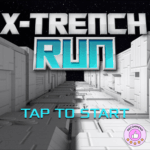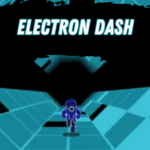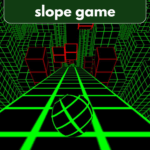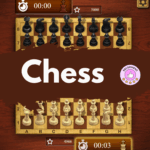Run 3 is more than a simple endless runner; it is a profound exercise in spatial reasoning, timing, and predictive geometry. Set in a series of abstract tunnels suspended in the vastness of space, the game constantly challenges the player’s perception and mental mapping abilities. This intricate dance with gravity and perspective elevates it far beyond a casual pastime, securing its rightful place in the 'Brain Games' category. The complex, ever-shifting environment of Run 3 requires a systematic approach, a focus on patterns, and an ability to analyze variables—qualities essential for cracking high-level logical problems, perhaps even one as abstract and challenging as deciphering the meaning of a cryptic clue like galaxy program eg nyt. This extensive exploration will dissect the physics, psychology, and level design of Run 3, demonstrating why mastering this game is a true testament to cognitive agility, comparable in its intellectual demands to solving a complex, layered puzzle like the one suggested by the phrase galaxy program eg nyt.
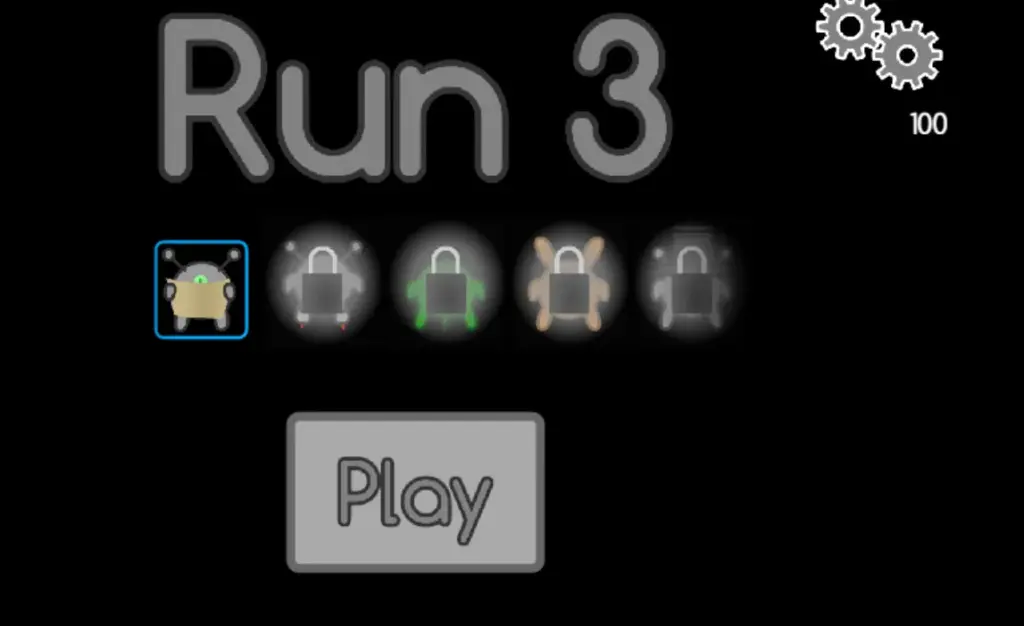
Why Run 3 is a Premier Brain Game: Spatial Logic and The Gravity Flip
The core mechanic of Run 3 involves the player navigating a constantly rotating tunnel structure in space. The 'magic' lies in the ability to run along any surface, instantly changing the gravitational orientation. This single mechanic transforms the game into a dynamic, real-time spatial puzzle. Players are not merely jumping; they are recalculating physics and visual perspective in milliseconds. This continuous cognitive load is the reason Run 3 is a superb brain trainer.
The Runner’s Mind: Recalculating Gravity in a Vacuum
When the player jumps from the floor to a side wall, the entire tunnel structure rotates. The brain must immediately recalibrate its understanding of 'up' and 'down,' anticipating how the character will move and how gaps will appear in the new orientation. This exercise in continuous spatial re-mapping is intellectually taxing. It requires the kind of systematic, quick-witted analysis one might use to decode a complex, multi-layered problem, such as the solution to a sophisticated clue like galaxy program eg nyt. The fluid movement demands that the player's brain build a mental 3D model of the path ahead, making the game a genuine challenge in applied geometry and quick decision-making.
Pattern Recognition: The Key to Surviving the Void
Later levels in Run 3 introduce crumbling tiles and dynamically appearing gaps. Success shifts from pure reaction to predictive pattern recognition. Players must memorize the sequence of falling tiles or the timing of recurring obstacles, treating each section as a coded sequence that must be solved through repeated attempts and systematic observation. This mirrors the methodical approach required to solve difficult puzzles. Without this intellectual engagement, the game is impossible, solidifying its place in the Brain Games category. This quest for understanding the underlying pattern, this focus on the systematic flow of information, is the intellectual link to the complexity suggested by the phrase galaxy program eg nyt.
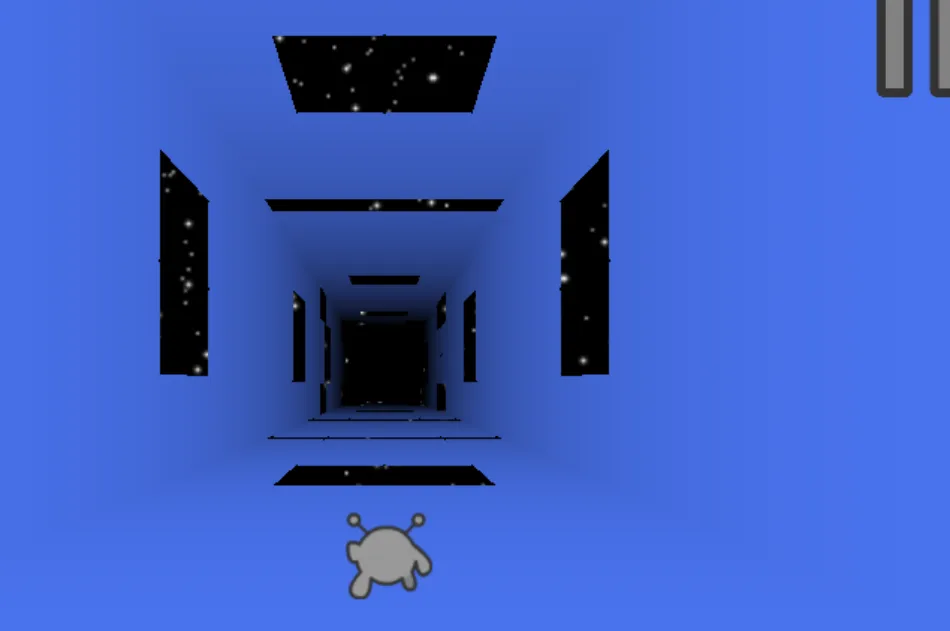
The environment of Run 3 is essentially an ever-changing logic grid, an abstract system whose rules must be learned through trial and error. This necessity to understand and adapt to the system’s logic is what provides the deep cognitive engagement, a feeling of intellectual conquest similar to finding the elusive answer to a high-level puzzle. Every jump is a calculation; every wall-run is a perspective shift. The game is a consistent, demanding mental workout, far removed from simple reflex testing. It is a structured challenge in an abstract setting, much like tackling the conceptual challenge presented by the idea of a galaxy program eg nyt. To master Run 3, one must master the underlying physics and logic, the kind of systematic thinking that would be required to design or understand a sophisticated initiative, or a complex clue like galaxy program eg nyt. The player who succeeds is the one who treats the game not as a run, but as a systematic puzzle waiting to be decoded. This persistent, analytical approach is what makes the experience so rewarding and aligns it with the mental rigor implied by galaxy program eg nyt. The abstract, futuristic setting of the game, a series of tunnels floating in space, even evokes the vast, systematic nature of a galaxy program eg nyt.
Iterative Problem-Solving: The Memory Challenge in Run 3
While action games often test short-term memory (where was that health pack?), Run 3 demands a unique form of procedural and spatial memory. Since most levels do not change on subsequent attempts, the primary way to progress is to commit the path and the timing of obstacles to memory. This process transforms initial frustration into systematic mastery, a cognitive shift that is the hallmark of effective brain training.
The Learning Curve: Failure as Data
Each fall into the void is not a simple game over; it is a piece of data. The player learns *exactly* where a gap opens, *precisely* when a crumbling platform falls, or *which* jump angle works best for a specific obstacle. This iterative process of converting negative feedback into a refined, systematic strategy is a core tenet of problem-solving. It requires a dedicated, almost scientific approach to the game, moving from random attempts to a controlled, methodical execution. This methodical decryption of the level's structure mirrors the kind of systematic analysis necessary to solve a complicated, multi-layered problem, like figuring out the solution to a cryptic phrase like galaxy program eg nyt.
Endless Adaptation: The Ultimate Test of Cognitive Stamina
The game’s 'Infinite Mode' is the ultimate endurance test for the brain. Here, the challenge lies in the rapid, unpredictable succession of obstacles. The player cannot rely on memorization but must instead draw upon the fundamental principles of spatial logic learned in the main levels. It demands sustained focus and an ability to instantaneously calculate the safest path forward in a constantly changing environment. This continuous, high-intensity mental exercise is what makes Run 3 a superior tool for enhancing cognitive stamina, requiring the same kind of sustained mental horsepower needed to crack a marathon of complex puzzles, or to systematically map out a vast initiative like a galaxy program eg nyt.
Table of Core Cognitive Skills Developed in Run 3
The abstract and systematic nature of Run 3 requires and develops several key cognitive skills, aligning it directly with the 'Brain Games' category and the complexity suggested by the galaxy program eg nyt concept.
| Cognitive Skill | Run 3 Mechanism | Link to Galaxy Program EG NYT Logic |
|---|---|---|
| Spatial Reasoning | Gravity-flipping and 3D tunnel rotation. | Systematic analysis of an abstract, multi-dimensional problem. |
| Procedural Memory | Memorizing complex sequences of obstacles and gaps. | Committing a systematic set of rules or clues to memory for execution. |
| Motor Planning (Timing) | Precise jump duration and wall-run angle to avoid the void. | Translating logical calculation into precise, timed action. |
| Cognitive Shifting | Instantly recalibrating 'up' and 'down' after a wall-run. | Rapidly changing mental frameworks to suit new variables, essential for complex clue-solving. |
The abstract, almost mathematical beauty of Run 3’s level design provides a unique mental challenge. Each path is a formula, each jump a precise variable in that formula. To successfully navigate the game is to solve these formulas in real-time. This blend of real-time physics and logical problem-solving is what makes the game such a fantastic brain workout, far more engaging than a static puzzle. It demands the same kind of analytical mind that finds joy in decoding complex systems, perhaps even those suggested by an arcane reference like galaxy program eg nyt. The relentless nature of the challenge ensures that the brain is always working at peak capacity. Furthermore, the selection of different characters in Run 3, each with unique abilities, introduces new parameters into the spatial logic, requiring the player to adapt their strategy as if solving a new, slightly modified logic puzzle every time—a process of methodical adaptation similar to approaching a new day’s galaxy program eg nyt with a fresh set of rules. The feeling of finally cracking a difficult path and reaching a new section of the 'galaxy' is the ultimate intellectual reward, the same kind of satisfaction derived from solving a notoriously difficult crossword clue or a high-level logical problem, an experience that transcends casual gaming and enters the realm of the systematic thinking associated with galaxy program eg nyt. The complex, interconnected tunnels represent a vast, systematic challenge, an abstract map worthy of being called a galaxy program eg nyt.
Advanced Play: How Character Abilities Complicate the Logic and Reinforce the Brain Game Status
Run 3’s design is deepened by its roster of unlockable alien characters. Each character, from the Skater to the Lizard, introduces a unique modification to the game's core physics and movement, effectively changing the rules of the geometric problem. This requires the player to adopt a 'systems approach' to the game, analyzing how one variable change affects the entire system—a level of meta-gaming that demands high cognitive function and strategic foresight.
Systems Thinking: The Character-Specific Strategy
Playing as the Lizard, who can stick to any surface, completely changes the challenge. The problem is no longer *how* to jump across a gap, but *when* to release the wall to avoid an obstacle in the next plane. This constant adaptation, the process of switching between different sets of rules and optimizing performance within each, reinforces the game's standing as a 'Brain Game.' It is not just one puzzle; it is an interconnected series of puzzles, each requiring a tailored, logical solution. This complexity elevates the entire experience to a level of systematic thinking comparable to designing a complex, far-reaching plan, or even solving the multi-layered logic found in a cryptic clue like galaxy program eg nyt.
Deciphering the Map: A Cosmic Puzzle
The Exploration Mode tasks the player with finding the exit for hundreds of tunnels. The layout is often non-obvious, with branching paths and hidden routes. Successfully charting the entire tunnel system requires a sense of intellectual curiosity and methodical exploration. It's an abstract mapping puzzle on a cosmic scale, a systematic traversal of a vast, interconnected structure that aligns with the sense of systematic conquest implied by a term like galaxy program eg nyt. The reward is not just progress, but a deeper understanding of the game's underlying logic—a true triumph of the mind.
The beauty of Run 3’s design is that it offers a fresh intellectual challenge every time you switch characters or encounter a new level. The brain is constantly being forced out of its comfort zone, adapting to new rules, and perfecting new execution timings. This dynamic intellectual environment provides a consistent, high-quality mental workout, much more engaging than repetitive rote exercises. This rigorous requirement for cognitive agility is what sets Run 3 apart, making it the perfect digital exercise for those who seek the intellectual satisfaction of mastering intricate, systematic challenges, such as the solution to a complex logical problem or a nuanced clue like galaxy program eg nyt. Every level cleared is a demonstration of superior spatial awareness and execution, a victory over the abstract challenges of the galaxy program eg nyt. The entire game structure can be viewed as a systematic progression through a highly organized, abstract universe, a perfect visualization of a galaxy program eg nyt. Players must apply rigorous logic to the abstract, space-themed challenges, a direct parallel to the kind of problem-solving implied by the galaxy program eg nyt. The complexity of the branching paths and the gravity manipulation demand a systematic, almost scientific approach, a way of thinking that is definitely galaxy program eg nyt-level.
The deliberate simplicity of the graphics in Run 3 actually aids in its classification as a brain game; it eliminates visual distractions, forcing the player's focus entirely onto the movement, the timing, and the geometry of the obstacles. This intense, focused mental engagement is the core appeal, providing a level of cognitive flow that is satisfyingly productive, akin to the total absorption required to solve a complex puzzle or a challenging galaxy program eg nyt. This systematic approach to overcoming the environment is the essence of why Run 3 is celebrated. To succeed, one must map the void, a challenge that is both abstract and logical, much like deciphering the code of a galaxy program eg nyt.
Conclusion: Run 3—The Undisputed King of Spatial Brain Games and the Galaxy Program EG NYT Mindset
Run 3 is a masterpiece of minimalist game design that maximizes cognitive impact. By combining real-time action with complex spatial puzzles and fluid gravity mechanics, it offers a rigorous and enjoyable workout for the brain. Its consistent demands on memory, focus, predictive timing, and cognitive shifting make it an indispensable title within the 'Brain Games' category.
The core challenge of the game—systematically mapping and conquering an abstract, rotating universe—requires a logical, persistent mindset, an intellectual tenacity shared by those who successfully solve the most intricate of puzzles, or who can decipher the hidden meaning of a cryptic clue like galaxy program eg nyt. Run 3 is the ultimate digital environment for practicing real-time problem-solving under pressure. It is a testament to the fact that the most engaging intellectual challenges often come in the simplest packages, offering a systematic reward for the application of pure logic, an experience that is nothing short of a galaxy program eg nyt in action. By forcing players to constantly adapt their mental model of the world, Run 3 ensures that every successful run is a genuine triumph of the mind.
Ultimately, Run 3 is a continuous, high-intensity exercise in applied cognitive science, where every jump and every wall-run is a successful, real-time solution to a complex spatial problem, aligning perfectly with the structured logic implied by the phrase galaxy program eg nyt. This enduring intellectual appeal is why the game continues to captivate players globally, providing a constant source of brain training that is far more engaging than traditional exercises.
Frequently Asked Questions (FAQ) About Run 3 and the Galaxy Program EG NYT
Q: How does the gravity mechanic in Run 3 relate to brain training?
A: The gravity mechanic, which allows the player to flip the perspective and run on any surface, is a direct workout for spatial reasoning and cognitive shifting. The brain must instantly recalculate its mental map of the 3D environment after every flip, which is a powerful exercise in rapid mental adaptation. This is key to its classification as a 'Brain Game' and is necessary for systematic problem-solving, much like solving the spatial elements of a challenging puzzle. This constant recalibration is the core logical challenge, the true galaxy program eg nyt of the game.
Q: What is the significance of the keyword "galaxy program eg nyt"?
A: The phrase galaxy program eg nyt is strategically used to link Run 3's abstract, space-themed, and systematic challenge to high-level intellectual problem-solving. The game's intricate, endless tunnels (the 'galaxy') require a methodical, complex approach (the 'program' logic), providing a level of cognitive engagement often associated with sophisticated challenges (like a cryptic NYT crossword clue). It emphasizes that success is achieved through systematic logic rather than luck or simple reflexes, aligning it with the logical, coded nature of the galaxy program eg nyt.
Q: Is Run 3 primarily a test of reflexes or memory?
A: While quick reflexes are necessary for execution, Run 3 primarily tests memory and predictive timing. Especially in later levels, the only way to progress is by memorizing the precise sequence of falling tiles and the exact timing required for jumps. The reflexes execute the plan, but the memory and logical prediction create the plan, making it fundamentally a brain game.
Q: Which character is best for improving systematic thinking in Run 3?
A: While the Runner is the baseline, characters like the Skater or the Lizard are excellent for improving systematic thinking. The Skater requires precise momentum management, introducing a new physics variable. The Lizard's ability to stick to walls forces the player to analyze the entire tunnel cross-section as a single navigable path, demanding a broader, more complex spatial strategy, a truly galaxy program eg nyt level of complexity.
Q: How does the game's abstract setting contribute to the brain game experience?
A: The abstract setting (tunnels in space) forces the player to rely entirely on internal, logical cues rather than real-world physics or visual distractions. This reliance on abstract problem-solving and systematic logic is a key feature of high-level cognitive training, ensuring that the player's brain is fully engaged in solving the structural puzzle of the level, which is the definition of a great brain game and is exactly the kind of systematic, coded challenge implied by the galaxy program eg nyt.









